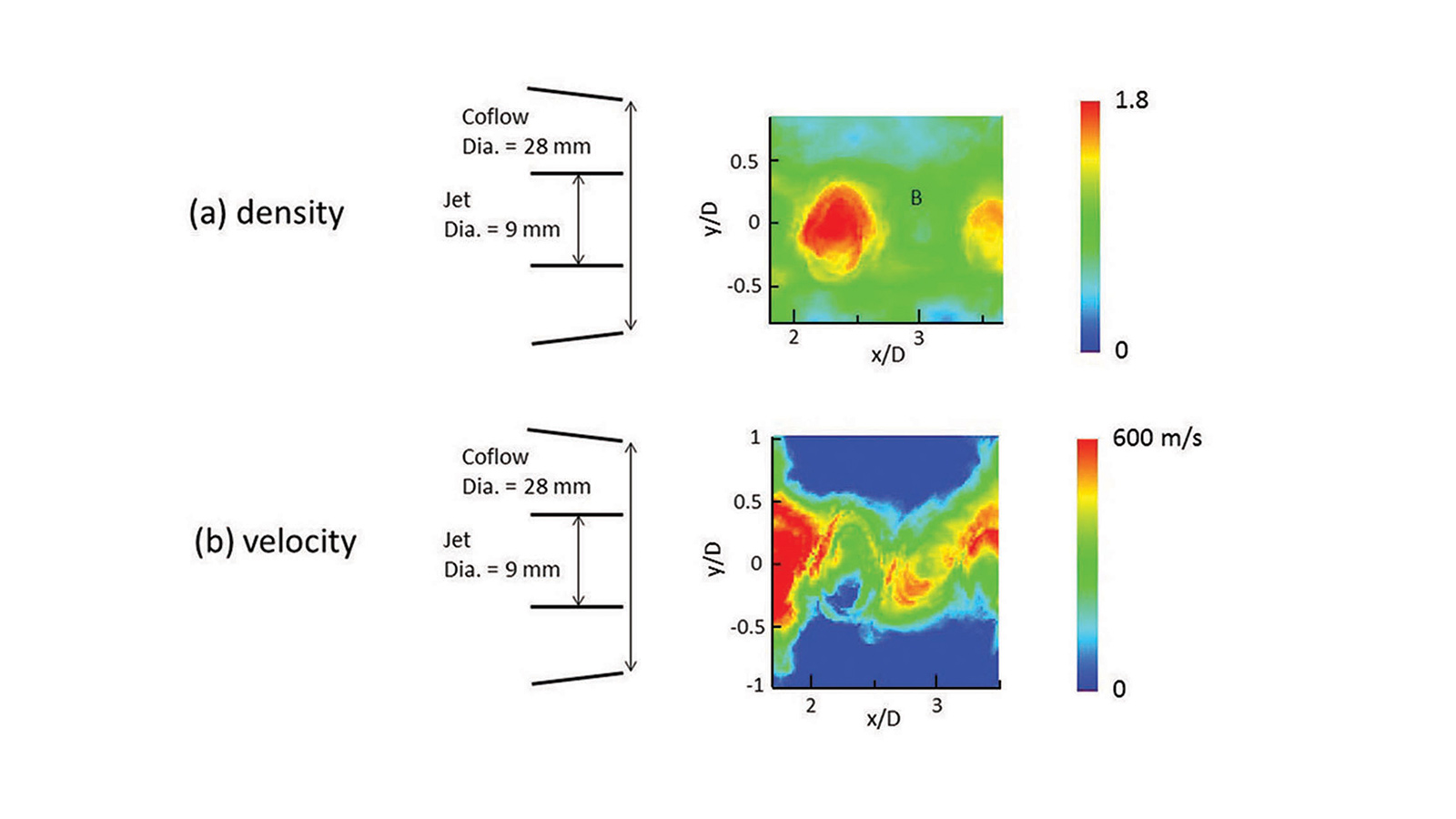Stay Up to Date
Submit your email address to receive the latest industry and Aerospace America news.
The Aerodynamic Measurement Technology Technical Committee advances measurement technology for ground facilities and aircraft in flight.
In January, Huixuan Wu’s group at the University of Kansas demonstrated a novel magnetic particle tracking technology, or MPT. Unlike other advanced flow diagnostic methods, MPT tracks an object with a magnetic field. It does not rely on optics and can be used in a completely opaque environment. Meanwhile, it does not involve radioactive materials or X-rays, so the operation is safe and easy. Although this idea dates back to at least the 1990s, previous researchers relied on optimization algorithms to reconstruct the particle trajectory. However, optimization is time-consuming, which limits its application. Wu’s group replaced the optimization-based approach with the use of a nonlinear Kalman filter, which increased the speed of reconstruction by three orders of magnitude and increased the accuracy and resolution. In May, the University of Kansas team applied the MPT technique to investigate a sheared dense granular flow in a Couette cell. They observed many interesting phenomena, such as the tendency of horizontal alignment of rods in the flow.
In April, DLR, the German Aerospace Center, applied temperature-sensitive paint to engine nacelles to investigate laminar-to-turbulent transition. The combination of carbon nanotubes and temperature-sensitive paint, or cntTSP, can measure boundary-layer transition on complex 3D wind tunnel models, since the carbon nanotube layers create homogeneously distributed surface heating. The cntTSP sensor can visualize the surface boundary-layer temperature distribution that arises due to the different heat transfer coefficients for laminar and turbulent flow. A wide area of interest for the use of cntTSP is the integration of the different cntTSP layers into complex 3D geometries like nacelles, which the aircraft industry needs to improve the data quality of wind tunnel tests. In the research, DLR investigated the applicability of cntTSP to a generic nacelle at the cryogenic test facility Pilot European Transonic Wind Tunnel. The team achieved flow visualization of the laminar to turbulent boundary-layer transition appearing on the nacelle.
In July, as part of a U.S. Air Force-sponsored project, MetroLaser Inc. demonstrated a diagnostic method for spatially resolved simultaneous measurements of density and velocity that can be applied to supersonic flows and that does not require flow seeding. The method, named two-cell filtered Rayleigh scattering, involves illuminating the measurement region with a laser sheet and measuring Rayleigh-scattered light from the flow with two cameras, each filtered by an iodine vapor cell of a different pressure. The methodology is based on a mathematical model that relates the Rayleigh-scattered light collected through the filter to the pressure, temperature and velocity of the flow. The model was used to convert the measured light intensities to density and velocity for each point in a 2D image of the flow. MetroLaser demonstrated the technique on a supersonic co-flow jet and correctly captured the 2D density field both spatially and quantitatively. The team also demonstrated feasibility of measuring the 2D velocity field, but limitations in the simplified image registration method used for this feasibility study resulted in some errors in the spatial velocity distribution. The use of more rigorous image registration methods, along with suggested improvements in the selection of iodine cell pressures, should enable the method to achieve an estimated 4% accuracy in both density and velocity in an optimized system.
Contributors: Christian Klein and Huixuan Wu
Stay Up to Date
Submit your email address to receive the latest industry and Aerospace America news.




